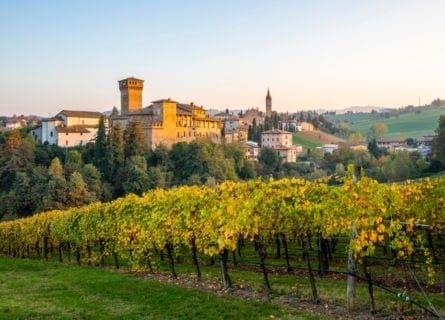
Emilia-Romagna Cuisine: Home of a Thousand Gastronomic Treasures
June 17, 2021
Discover Emilia-Romagna's culinary treasures, including Parmigiano Reggiano and Prosciutto di Parma. Your Italian culinary adventure awaits!
By: Sarah Lane / Last updated: April 27, 2024
Estimated reading time: 10 minutes
In the patchwork of Italy’s regions, Emilia Romagna takes a large portion of the northeast, stretching from the Adriatic coast to almost the whole width of the country. Geographically, it’s divided in two by the die-straight Via Emilia built in the 2nd century BC and still fundamental to local mobility. The vast flat plains begin to the north of the road, while the area to the south is hilly and even mountainous; the famous Food Valley lies at the region’s heart. Despite there being no official border between the western part, Emilia, and Romagna to the east, the two halves have clear-cut characteristics, summed up quite nicely with a traditional saying: “you know which part of the region you’re in if you stop and ask for a drink – if you’re given water you’re in Emilia, but if you get wine it’s Romagna.” Castles and appealing medieval villages abound throughout the region, many with links to the wine world, and all are very much worth exploring. Here’s a selection of them, from west to east.
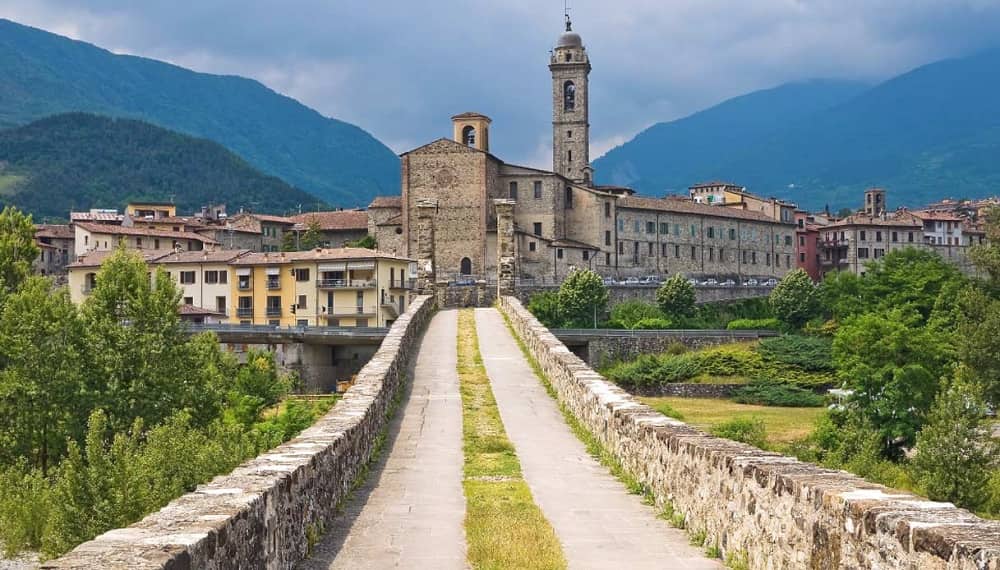
It is set in the Trebbia River valley countryside near Piacenza in the north-western corner of Emilia Romagna. Bobbio grew around the 7th-century abbey of San Colombano, built by Irish missionary Saint Columbanus (San Colombano), and has played a fundamental role in developing the Benedictine order throughout Europe. The abbey complex has grown through the centuries with the addition of features, including an 11th-century cloister, now home to a museum, and a Renaissance basilica with lovely frescoes. Another distinguishing characteristic of Bobbio is its unusual Ponte Gobbo bridge, stretching over 250 meters across the River Trebbia with 11 arches and a bumpy up-and-down profile. This is the land of Colli Piacentini wines such as the local white Ortrugo (typically sparkling) and red Gutturnio, a Barbera-Croatina blend first made, it’s said, by Julius Caesar’s father-in-law.
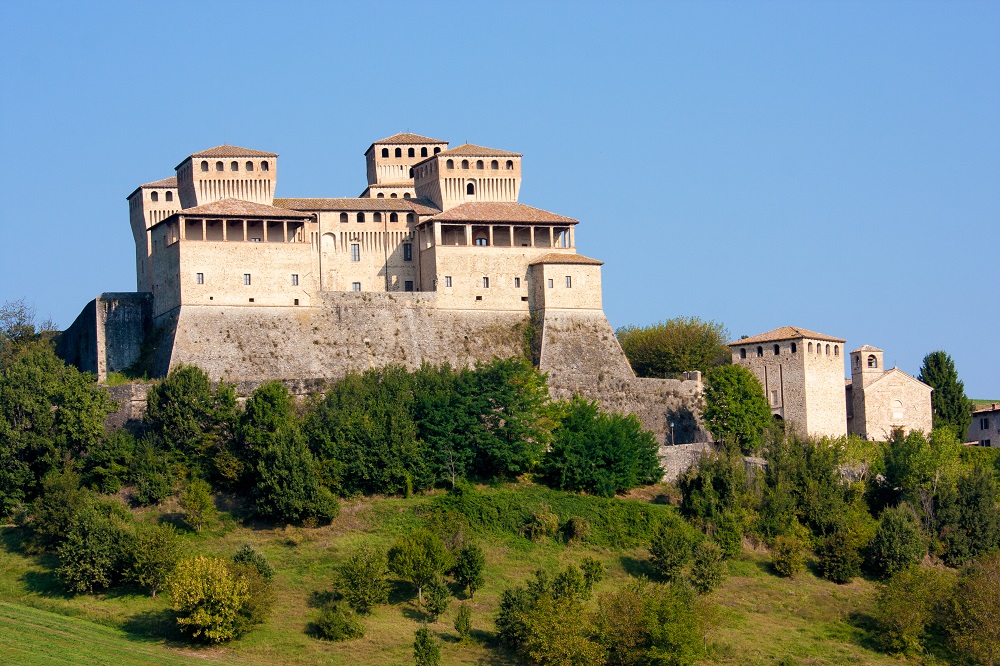
The fairy-tale silhouette of Torrechiara’s 15th-century castle, with its distinctive towers and sturdy triple wall, merges harmoniously with the surrounding hills. Torrechiara, which is around 20km south of Parma and close to Langhirano, the heart of the area’s prosciutto ham production, is the most striking of the approximately 40 well-preserved fortifications in the area around Parma and Piacenza, and its architecture is significant at the national level too. The castle is one of many built by Pier Maria Rossi and was conceived as a courtly residence for his beloved, Bianca Pellegrini, as well as for defense; the interior boasts some spectacular fresco cycles, including those dedicated to the couple’s love story, in the Camera d’Oro. The tiny stone-built village surrounding the castle is a delightful place to wander and has wide-open views from the castle walls.
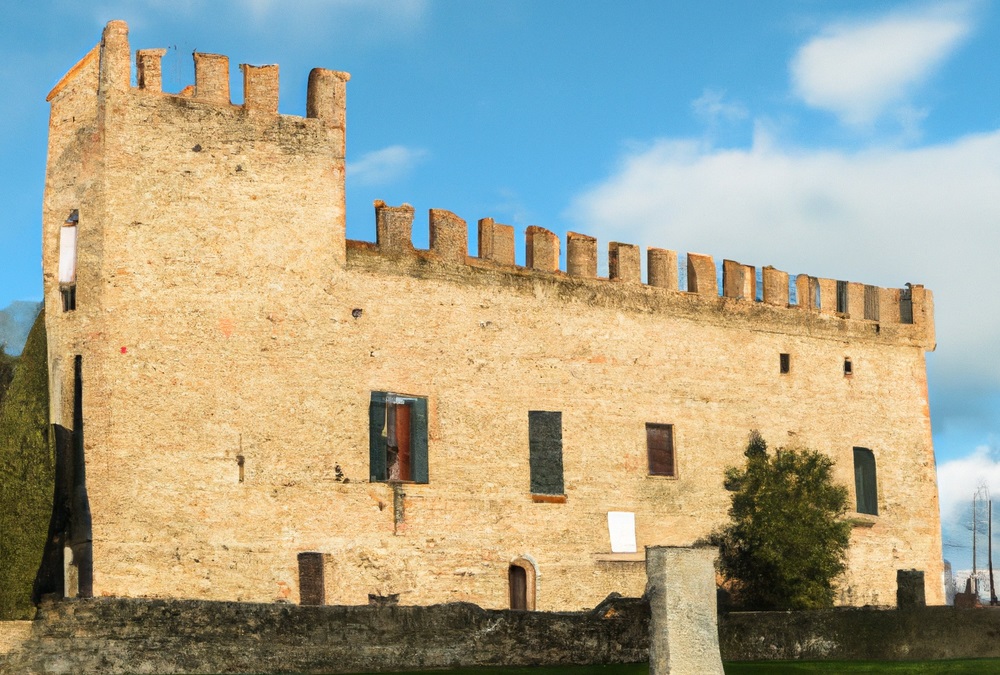
The historic heart of Castellarano is like a village within a village, its atmospheric cobbled lanes and beautifully kept stone buildings coming as a surprise. It’s like taking a step back in time as soon as you pass under the arched entrance through the imposing fortifications of the 15th-century gatehouse, which now houses a restaurant. Wander up through the village, stopping at the Aia del Mandorlo panoramic terrace for great views over the Secchia river valley and to see the statuesque castle and clock tower with its curious single-handed clock faces. This is the Colli di Scandiano e Canossa wine area where the local white grape, Spergola, is one to try, as well as the fragrant local versions of Lambrusco and red Malbo Gentile.
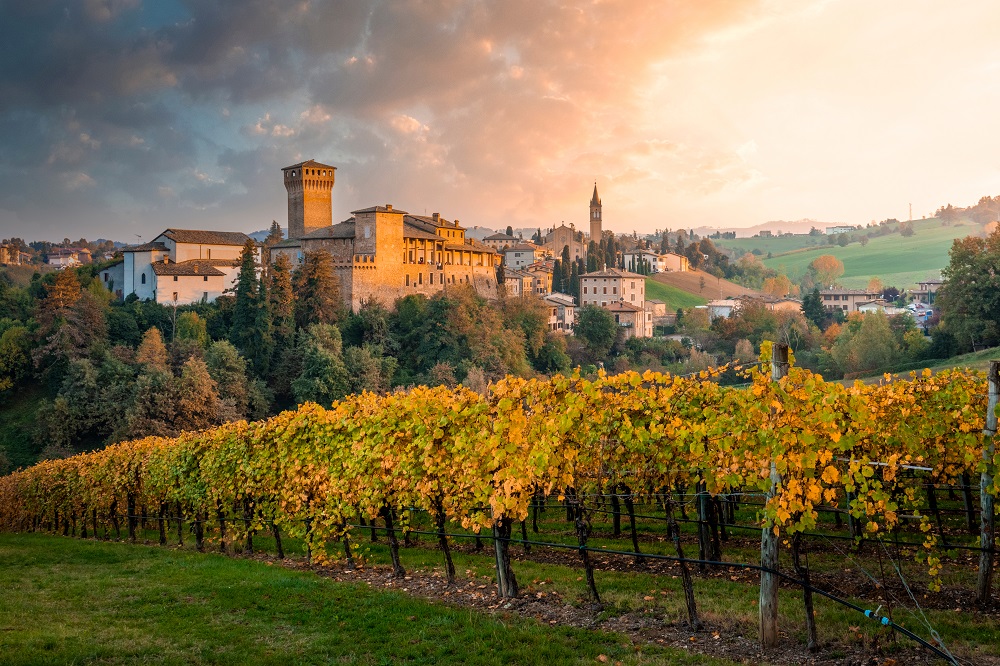
In the hills just south of Modena, the medieval village of Castelvetro is at the heart of local wine production and even gives its name to the wine. Lambrusco Grasparossa di Castelvetro DOC is celebrated with a dedicated festival each September when the vines surrounding the village start to turn their characteristic red. This spot has been inhabited since ancient times, and important Etruscan remains found in the area are displayed in Modena’s archaeological museum. Along with the local Lambrusco, the most celebrated feature of the village is its piazza with black and white checkerboard paving, where a living board game is held every other year in September (even years). In addition, the charming village has a series of attractive palazzi, one hosting a permanent exhibition of Renaissance costumes and a municipal balsamic vinegar loft which is also open to the public.
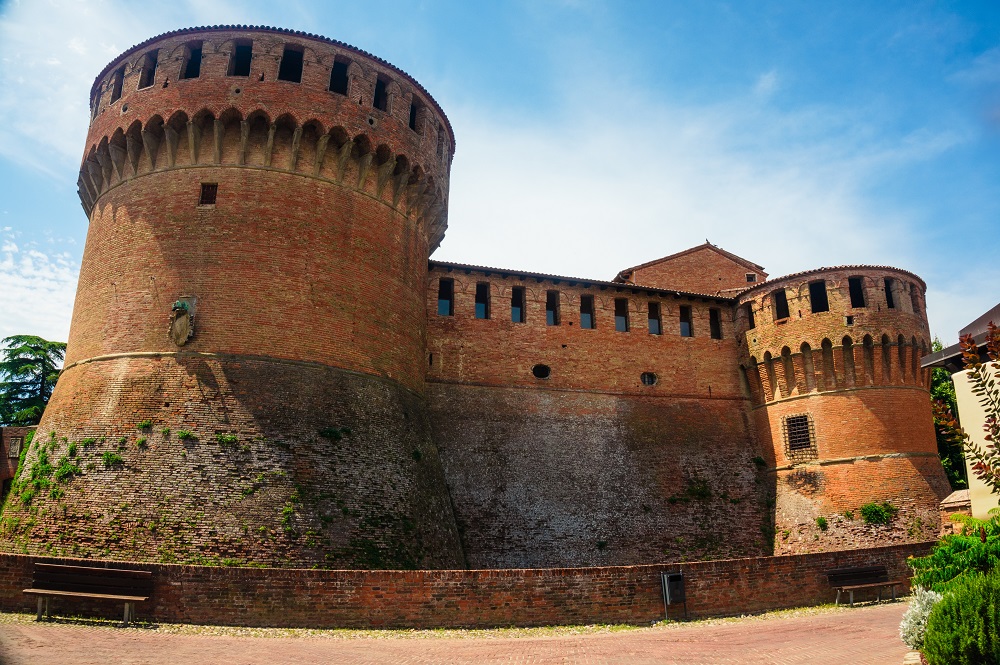
A must-see for wine lovers, this delightful hilltop village between Bologna and Imola is home to the Enoteca Regionale Emilia Romagna – where you can try and buy the region’s best wines, all having been blind-tasted by a panel of experts. The Enoteca is housed in the cellars of the village’s attractive and perfectly preserved medieval castle, which was a private home until 1960 but is now open to the public. In addition, the village is an open-air art gallery thanks to the biennial art festival (odd years), when artists are invited to paint their designs on the center’s walls. Dozza is at the heart of the production area for Italy’s first white DOCG Albana, a wonderfully structured and highly versatile wine. The Sentiero del Vino footpath from the village winds its way through vines and olive groves across the sandy soil where the variety thrives.
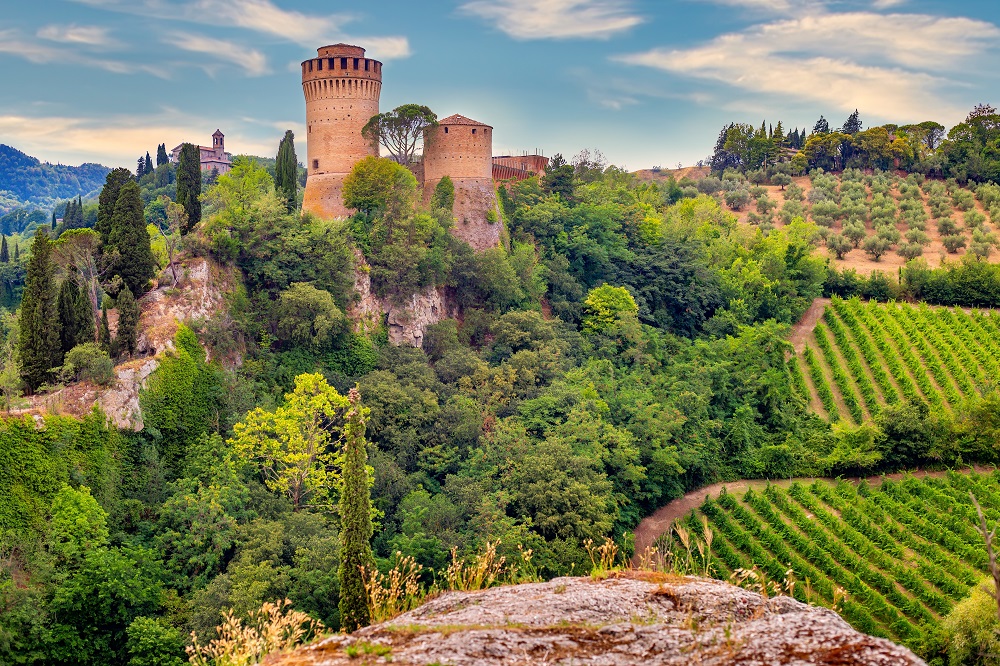
Home to Italy’s first DOP olive oil, Brisighella, near Faenza, celebrates this and its other prime products through annual food-themed festivals that include ancient varieties of fruit and a local specialty artichoke. In addition, olive oil tastings are available, and there’s even a Sentiero dell’Olio walking trail.
This is the heart of the area’s gypsum vein, and the village is built on the chalky land on three adjacent hills topped respectively by a tower with an unusual clock with six numbers, a medieval castle, and a church, together making for a striking skyline and linked by an accessible footpath. The village has a good choice of restaurants and a curious raised. An arched covered walkway, known as Via degli Asini (road of the donkeys), was originally built for defense but was later home to the animals that worked at the nearby quarry.
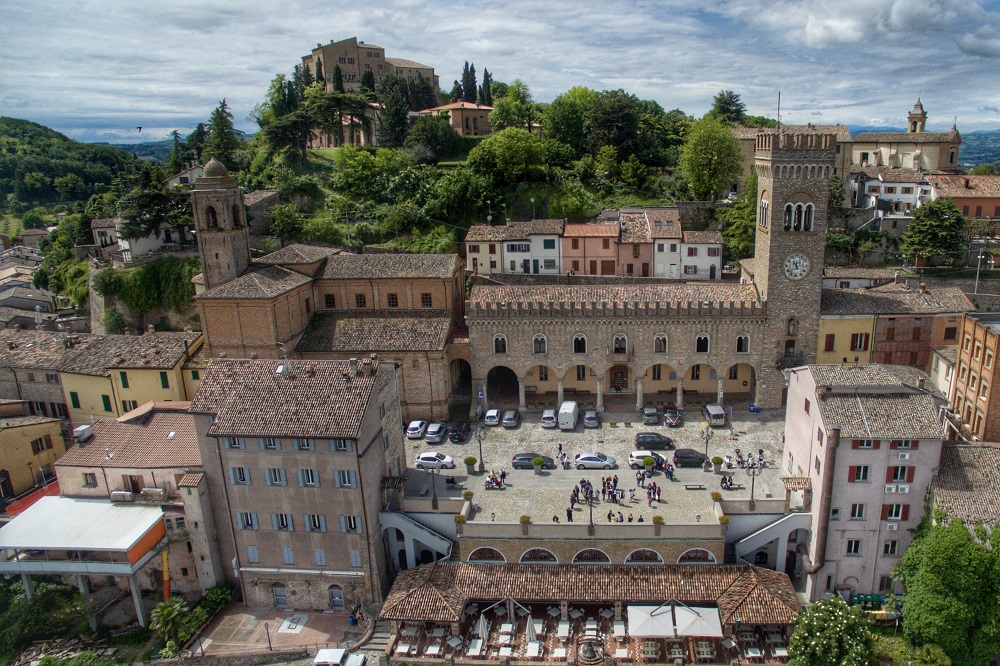
Legend has it that Bertinoro derived its name from wine – Berti in oro means ‘drink you in gold.’ The story goes that the name of this village in the hills near Forlì comes from the words uttered by 5th-century empress Galla Placidia, who was so impressed by the Albana served to her in a rough terracotta bowl that she exclaimed that she should be drinking it from a golden vessel. The local wine is so important here that there is even an Albana bell, commissioned when the wine became Italy’s first white DOCG in 1987 and rung to mark the start of each grape harvest. Hospitality is deeply ingrained, and the village’s twelve-ringed hospitality column comes into play each September with a reenactment of the ancient custom, which involves local families offering hospitality to any visitor tying their horse to the ring corresponding to their family. Bertinoro is also known as the balcony of Romagna, thanks to the far-reaching views from its hilltop position; the medieval castle above the center nowadays hosts an interreligious museum.
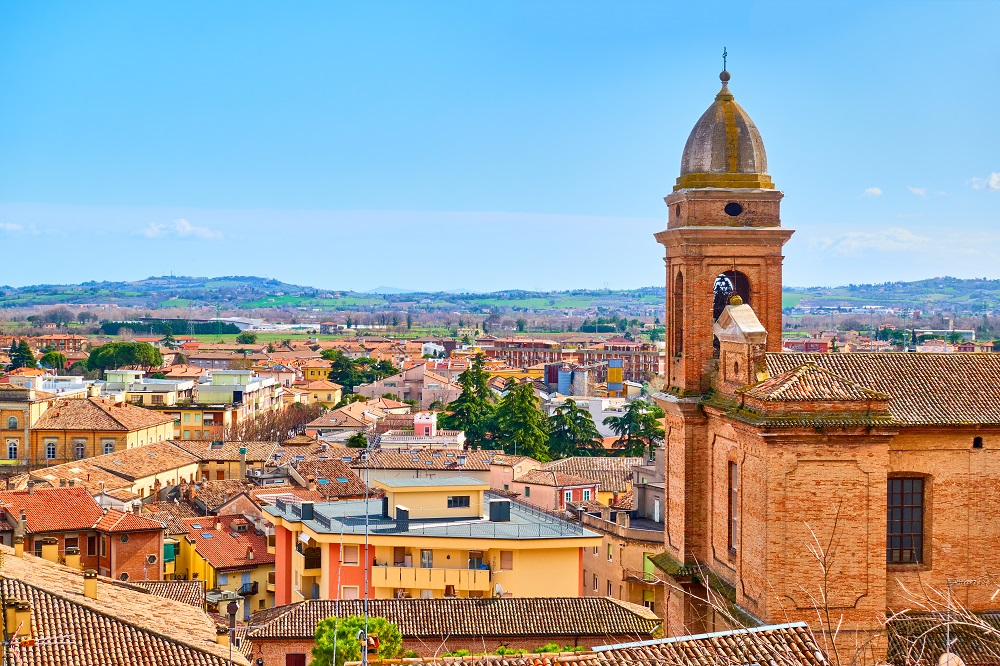
The protagonist of a longstanding, lighthearted debate with Tuscany about the actual birthplace of the Sangiovese grape, Santarcangelo, is a lively and fascinating place close to Rimini. The village is built on a hill called Mons Iovis (the hill of Jove), where medieval monks made a wine they called the ‘blood of Jove’ (Sangue di Giove), which supposedly led to the name Sangiovese – in reality, DNA testing has disproved both this and the Tuscan claim. Alongside an excellent selection of places to eat and drink, Santarcangelo has an intriguing network of ancient underground chambers carved into the rock, whose origins are still unknown. There’s an imposing castle, fortified walls, and a vast 17th-century wooden wheel-press still used by a traditional print shop where typical designs such as bunches of grapes, cockerels, and jugs are applied using natural substances onto tablecloths and other fabrics.
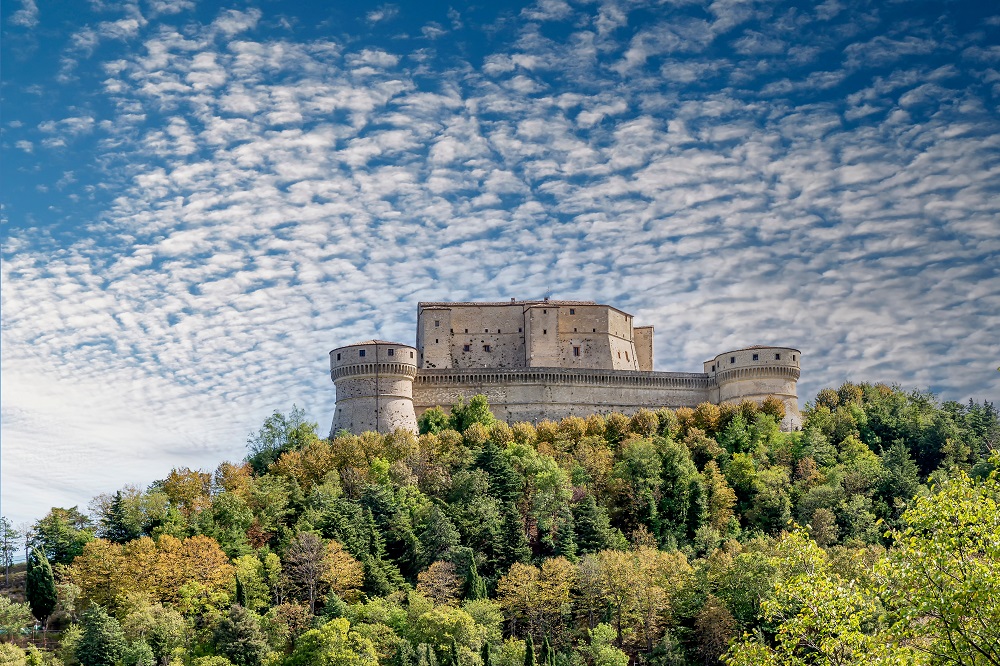
A stunning village perched precariously on a rocky spur and dominated by a majestic Renaissance castle – San Leo is a dramatic sight from the surrounding area. Your expectations will certainly not be let down once you reach the heart of the appealing stone-built center. With two beautiful churches, including a Romanesque cathedral, the village is named after San Leone, who arrived in the area after crossing the Adriatic sea from Dalmatia together with San Marino, who gave his name to the nearby state of San Marino. San Leo is just inland from Rimini and at the heart of the gorgeous unspoiled countryside of the Montefeltro area between Emilia Romagna and Marche, where artists, including Piero della Francesca, found inspiration for the lovely settings portrayed in their paintings.
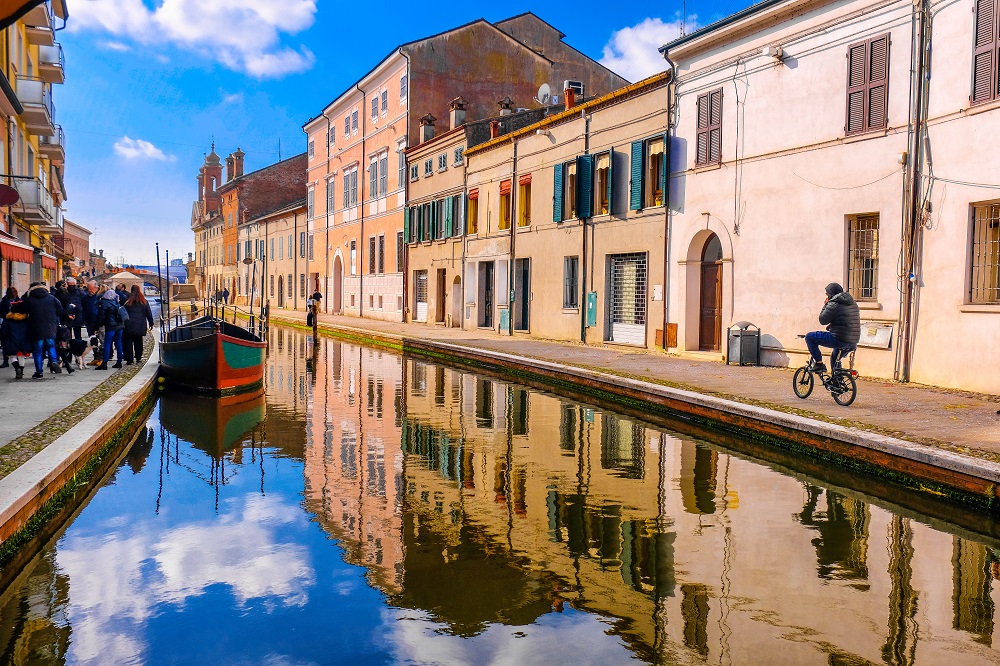
At the edge of the evocative watery lands of the Po River delta, Comacchio is a charming place with a pedestrianized center laced with narrow canals crossed by bridges, the most unusual of which is undoubtedly the monumental five-legged Trepponti bridge, a striking local landmark. Eels are the principal local specialty, and a dedicated festival is held each autumn with events and activities, including boat trips, special eel-themed menus, and market stalls. There’s also a fascinating museum, Manifattura dei Marinati, focused on traditional eel-working practices. The Delta Antico museum has an interesting display of the area’s history and how it’s been transformed through the ages, as well as the cargo of an ancient Roman ship discovered in the 1980s. The watery flats surrounding Comacchio are home to a vast community of waterbirds, including flamingos, and a birdwatching festival is held every two years.
If you would like us to customize an exclusive luxury tour, contact us and let us know your travel plans. We offer luxury food and wine tours for private groups of a minimum two guests. In addition, all of our private, chauffeured tours are available year-round upon request.

